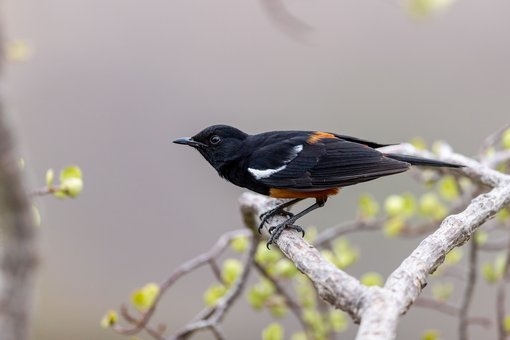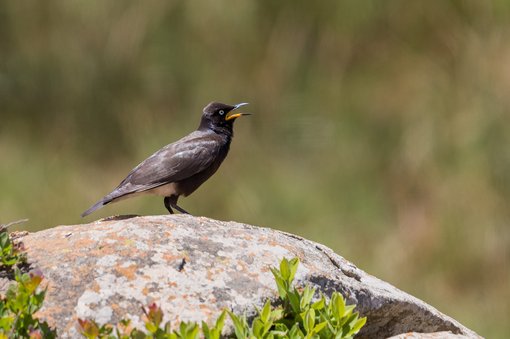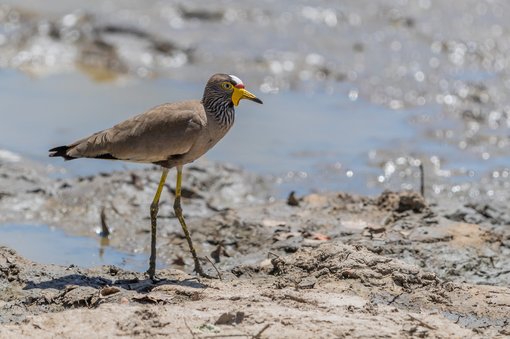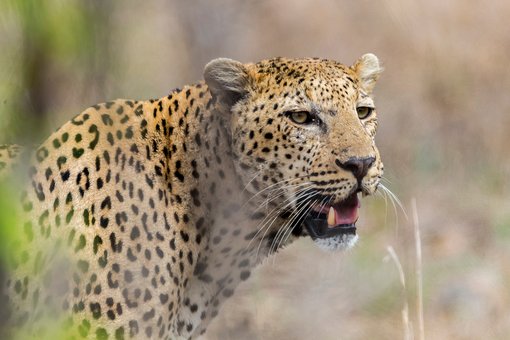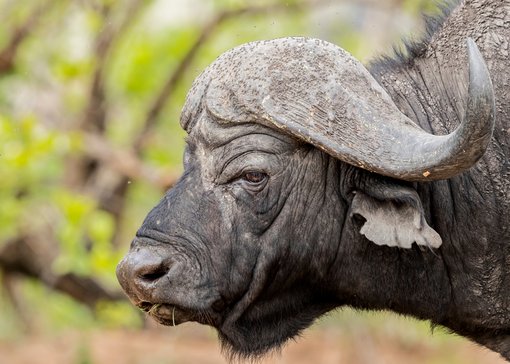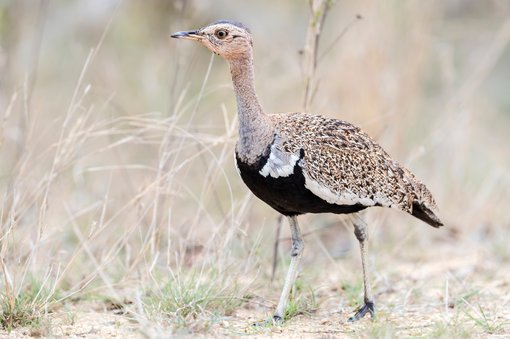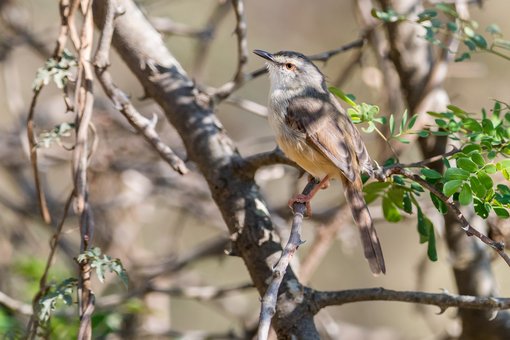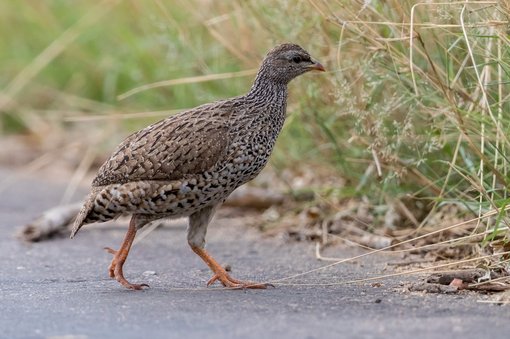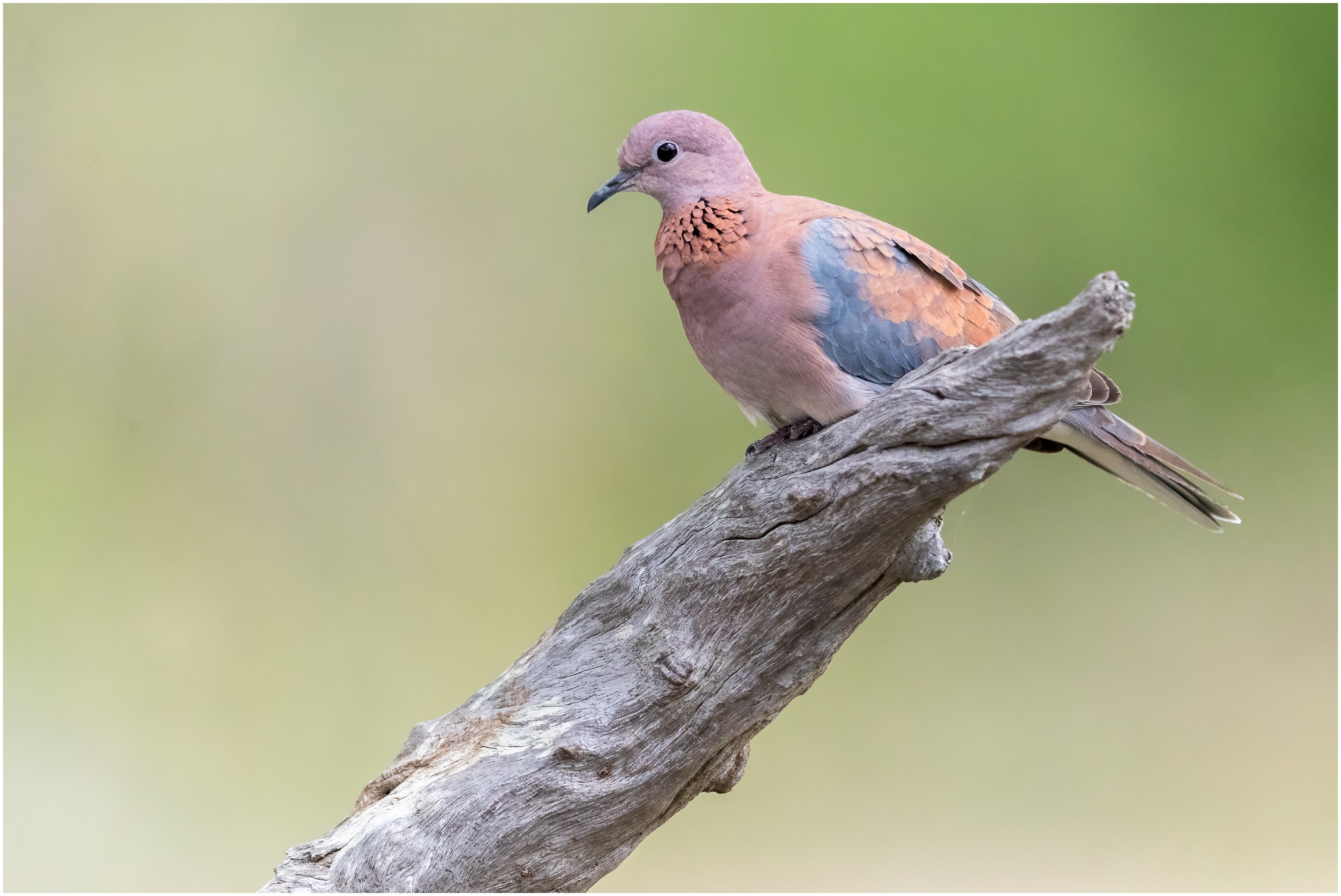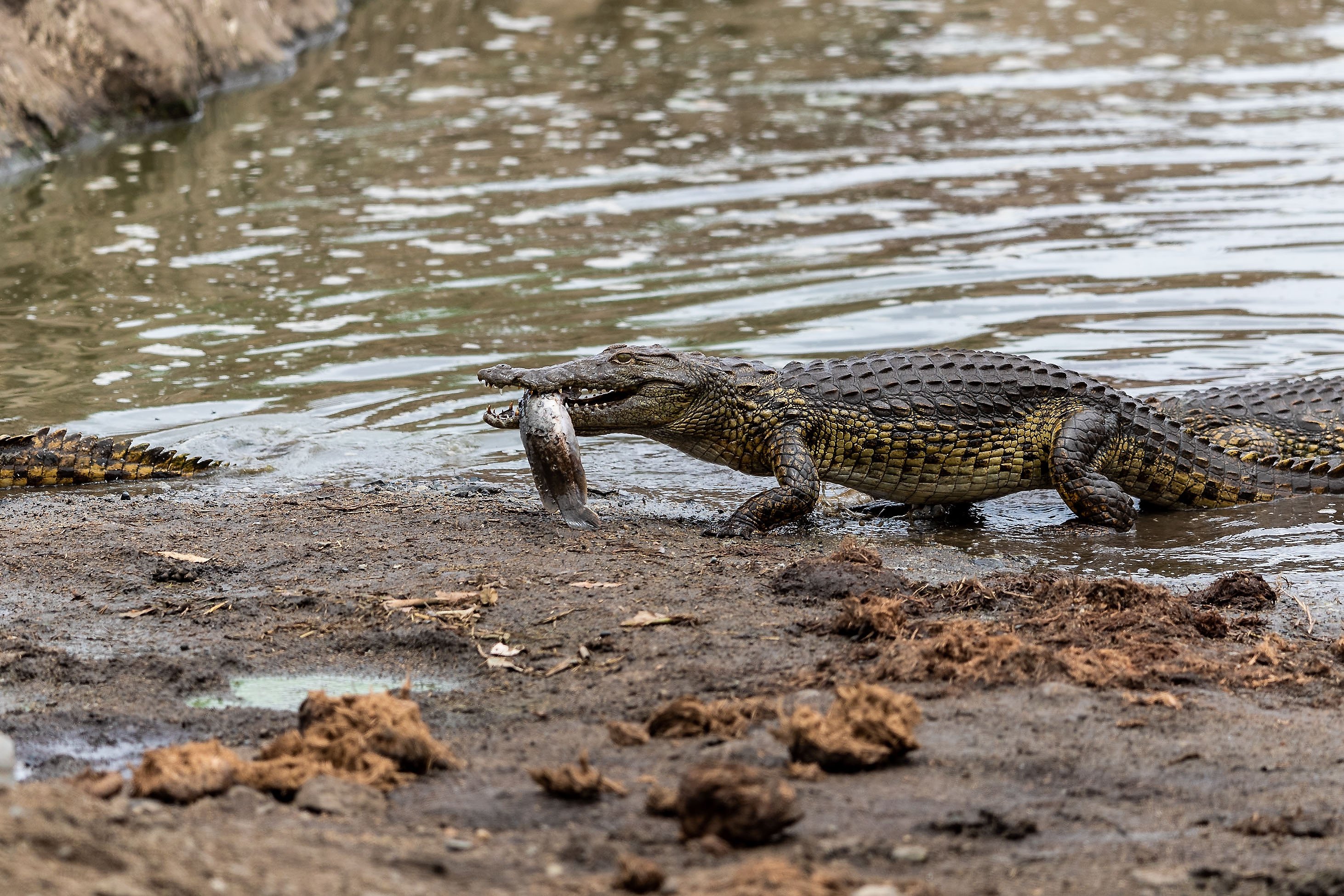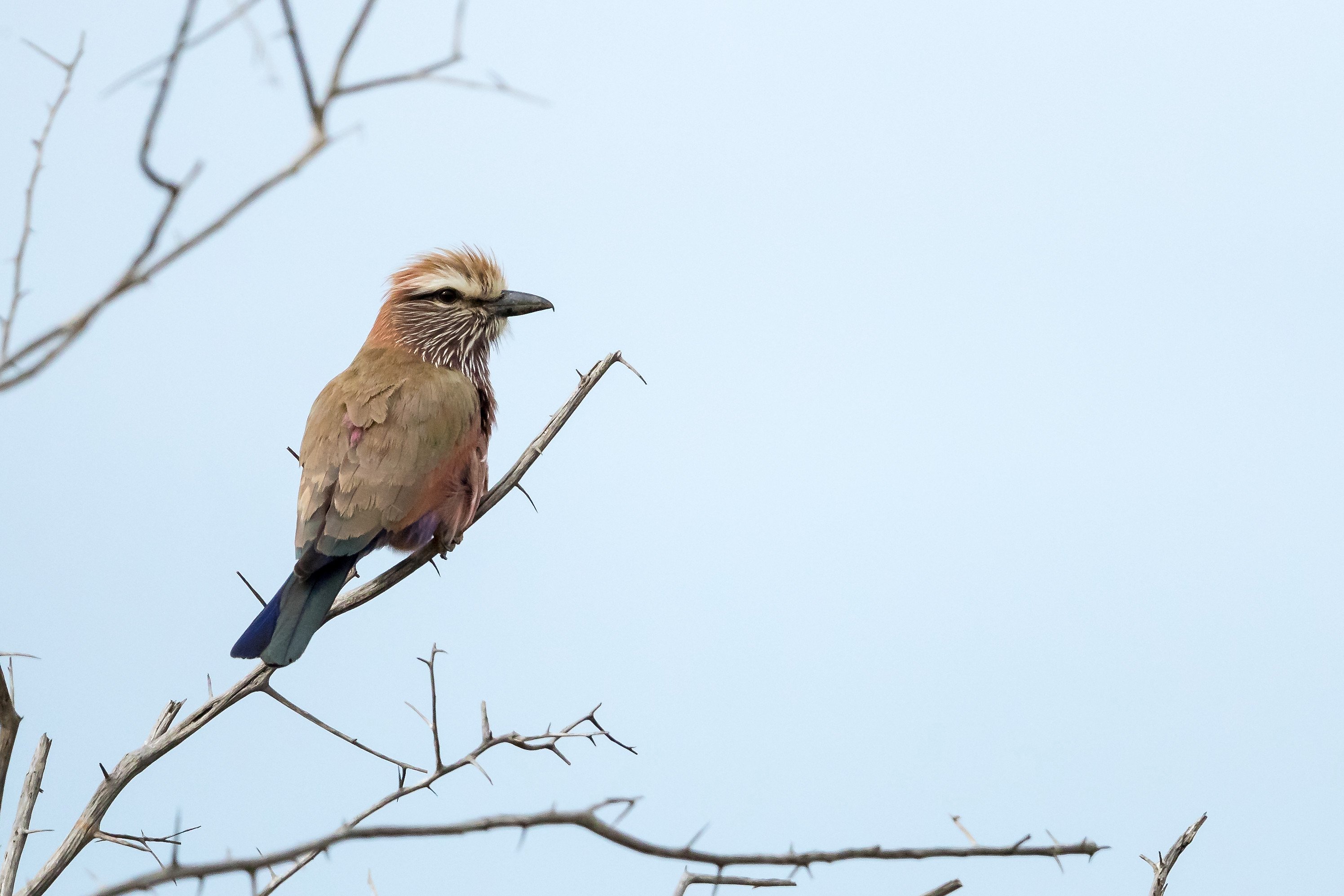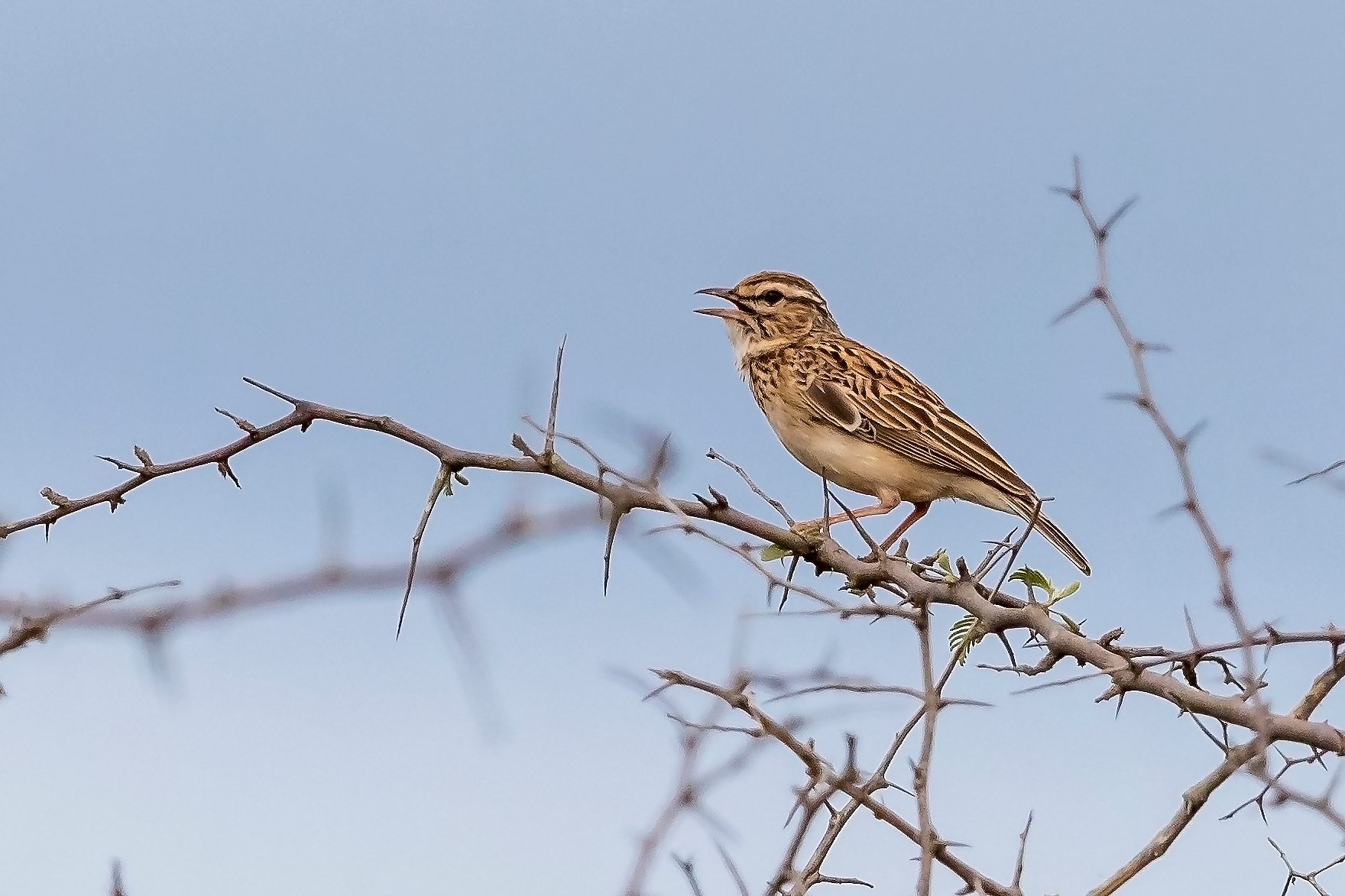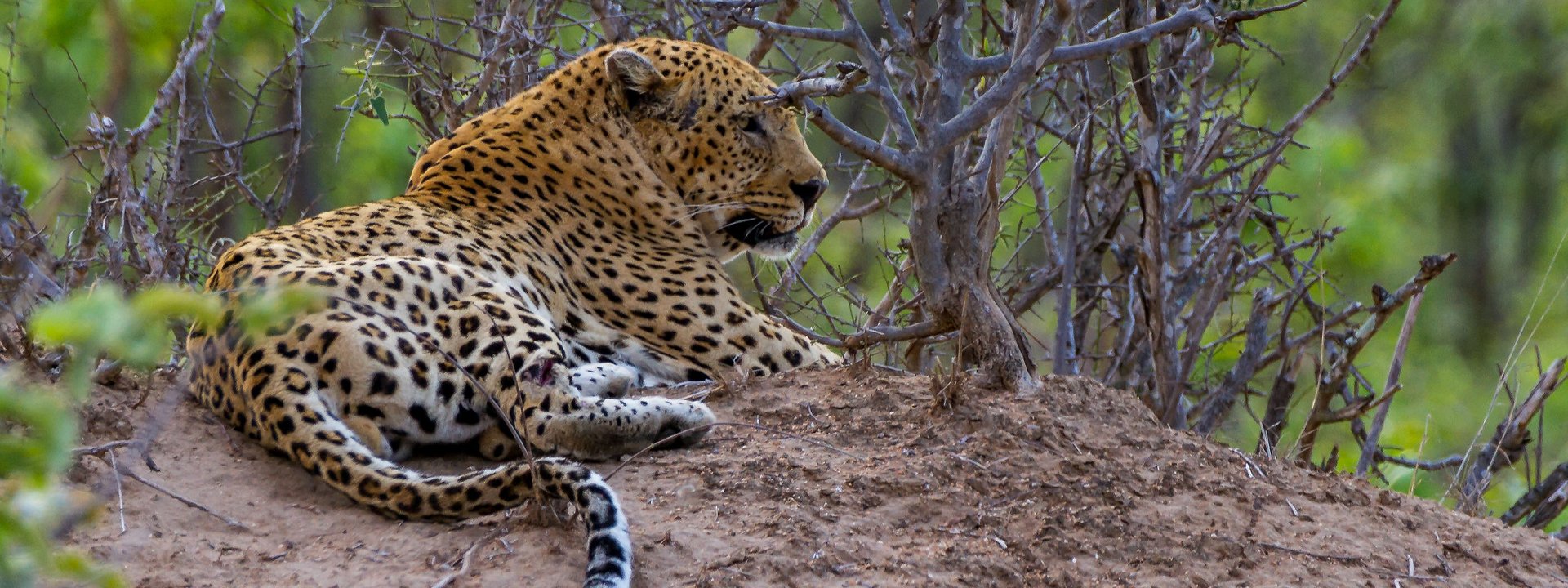South Africa
Kruger and Drakensberg
A 14-day, small group birdwatching and general wildlife tour to South Africa exploring the world famous Kruger National Park and Drakensberg Mountains
Limosa's tour to eastern South Africa boasts an amazing opportunity to see a dazzling array of species. Concentrating on two of the country’s top wildlife locations, the world famous Kruger National Park and spectacular Drakensberg Mountains, we plan to visit at a wonderful time of the year for watching birds and mammals.
Starting off in the Central Drakensberg Mountains, we will look for specialities such as the Drakensberg Rockjumper before moving on to the pristine upland grasslands around Wakkerstroom where we hope to find the elegant Blue Crane, Blue Korhaan and two localised and endangered endemics, Rudd’s and Botha’s Larks.
We will then spend five nights in the amazing and rightly famous Kruger National Park where there are a fantastic range of birds and mammals to enjoy. Avian highlights could include the bizarre Purple-crested Turaco or the appropriately named Southern Carmine Bee-eater with a host of potential mammals including African Lion, African Leopard and African Elephant.
Reluctantly dragging ourselves away from the Kruger, we will end our trip in the mountains of the Northern Drakensberg where we will look for one of the world's rarest raptors, the Taita Falcon, plus the exotic Narina Trogon and colourful endemics such as Knysna Turaco and Swee Waxbill.
Tour Dates & Prices
Tue 28th October 2025
Mon 10th November 2025
- Available
Tour Cost: 14 Days from £5395*
* Price to be confirmed in November 2024
What's Included?
- Limosa Tour Leader and expert local guide
- 11 nights' accommodation in South Africa
- All main meals (with drinking water provided)
- Minibus transport
- Open-sided, 4WD wildlife viewing vehicles in Kruger National Park
- All excursions, entry fees, permits and wildlife drives in the parks, tour based tips (including tips to local drivers/guides) and taxes
- Limosa checklist of bird & mammals
Cost Excludes
International Flights, insurance, drinks, airport meals/snacks and other items of a personal nature
Notes
The Land Only Tour Cost is the amount you will pay Limosa.
Despite the end of many pandemic restrictions, it is still proving extremely difficult to predict future flight prices and schedules. As a result, we have taken the decision to continue to price our holidays as excluding international flights.
To keep the process as simple as possible, we are working very closely with a dedicated agent at Travel Counsellors, Sacha Barbato, who is essentially now our “in house” flight consultant.
Sacha is a highly experienced independent ATOL bonded travel agent, and his contact details are as follows: sacha.barbato@travelcounsellors.com and 01603 360099
He will be able to advise you which flights we are recommending for each holiday and will be able to book these for you.
This will also sometimes give you the option to travel from a regional airport if you prefer.
Tour Highlights
- Abundant birds and mammals on this ‘must-do’ South Africa tour
- Expect 300+ bird species including many regional endemics and specialities
- The spectacular Drakensberg Mountains which have the highest peaks in Southern Africa
- Blue Crane, Purple-crested Turaco, Drakensberg Rockjumper, Orange Ground Thrush
- Southern Bald Ibis, Blue Korhaan, Southern Ground Hornbill, Rudd’s and Botha’s Larks
- Includes five nights in world famous Kruger National Park
- Superb for mammals: Meerkat, Southern Giraffe, African Elephant, African Lion, African Leopard, White Rhinoceros
- Small group tour with a maximum of 10 participants
- Expertly led by Limosa's Leader Carl Downing and an experienced local bird and wildlife guide
Outline Itinerary
Fly to Johannesburg
We arrive in Johannesburg during the morning and transfer south to the Maluti Mountain Range in the Golden Gate National Park (2 nights)
Explore the Drakensberg Mountains
Birding the pristine upland grasslands of Wakkerstroom (2 nights)
Kruger National Park, staying at camps in the southern and central park. Kruger (5 nights)
Blyde River Canyon, the World's third largest canyon (1 night)
More jaw-dropping scenery as we explore the Afromontane forests of the remote Northern Drakensberg. Mount Sheba (1 night)
Return to Johannesburg for our evening flight to the UK
Morning arrival in UK

Below the great escarpment of the Drakensberg Mountains - the ‘mountains of the dragon’ with their breath of smoking cloud sits one of the world’s most celebrated national parks: Kruger. Bordered on its northern flank by the mighty Limpopo River, the Kruger is the largest of all South Africa’s national parks encompassing almost two million hectares and is only a tad smaller than Wales!
Hot and dry in the north, wetter and subtropical in the south, its immense size and range of habitats ensures that wildlife is varied and abundant. More than 500 species of birds and around 150 different species of mammals have been recorded in Kruger and our February tour will introduce you to many of them!
After arriving in Johannesburg, we first travel south, via spectacular scenery and displaying Long-tailed Widowbirds, towards the Central Drakensberg. From our base in the foothills, we take a trip into the mountains, climbing high into the realm of the Lammergeier to search peaks at around 3000m (9800ft) for the endemic Drakensberg Rockjumper.
From here, we swing northeast through the highlands to explore the most threatened habitat in South Africa: the pristine upland grasslands around Wakkerstroom. The extremely localised Rudd’s and Botha’s Larks are two key endemics here, occurring alongside larger and more eye-catching specialities such as the wonderful Blue Crane, Southern Bald Ibis and Blue Korhaan.
Continuing north, we enter Kruger National Park, where we will find a mix of woodland, grassland and scrub which is home to a fabulous cross-section of African birds. Natal Spurfowl, Martial Eagle, White-crowned Lapwing, Purple-crested Turaco, Southern Carmine Bee-eater, Orange-breasted Bushshrike, Bearded Scrub-Robin and many more delights await our discovery here!
On reaching our first camp in Kruger, we shall switch from our minibus to a custom-built, open-sided wildlife viewing vehicle equipped with three tiered rows of seats, great visibility and a canopy roof for protection from the sun. We shall use this vehicle on three of our four full days within the park, reverting to our minibus again on our 'changeover day' when we make the more lengthy transfer between our camps in the south and centre of this vast national park.
Giraffe, African Elephant, Burchell's Zebra and White Rhinoceros are among many large mammals to watch for during our slow drives through the park and we also have a good chance of sighting Africa's two largest cats, Lion and Leopard!
Bidding a reluctant farewell to Kruger, our tour concludes amid the mistbelt forests of the far Northern Drakensberg. Here we might again be fortunate to find Taita Falcon, one of the rarest raptors in the world, as we go in search of the exotic Narina Trogon and Orange Ground Thrush as well as two colourful endemics: Knysna Turaco and Swee Waxbill.
From a landscape of scenic splendour awash with wonderful birds and wildlife through to good food and great accommodations, our Kruger & Drakensberg tour has all the ingredients for a truly marvellous birdwatching holiday.
Carl Downing has been leading bird tours for nearly thirty years and has visited South Africa several times. He has birded Kruger National Park from north to south and has also spent time in the Drakensberg Mountains.
Limosa has been operating a wide-ranging programme of birdwatching tours to South Africa since 1998 and our 2024 departure to Kruger and Drakensberg will be our thirteenth visit there.

Days 1 - 2
FLY JOHANNESBURG, TRAVEL TO CENTRAL DRAKENSBERG
Our birdwatching and mammal tour to South Africa begins with a flight to Johannesburg, where we arrive on the morning of day two. We will meet up with our local birding guide and travel south via an excellent highway through the highveld grasslands, stopping to enjoy displaying Long-tailed Widowbirds, while Black-winged Kites and Blacksmith Lapwings watch on. Our total drive time today should be about 3-4 hours, plus a stop along the way for lunch.
In the afternoon, we will detour down some minor roads through the natural grasslands, where we will begin our search for three species of crane. The elegant Blue Crane is South Africa’s national bird and occurs in small flocks. Grey Crowned Cranes prefer moist grasslands and, with luck, we might also find the very rare Wattled Crane in it’s wetland home. We shall keep a keen eye out for bustards and could chance upon the exquisite Blue Korhaan (Bustard) here. Larks might include Spike-heeled, Eastern Long-billed and perhaps even a Botha’s or Pink-billed.
Heading south to the Maluti Mountain Range in the Golden Gate National Park, we plan to arrive at our country hotel accommodation in the late afternoon where we will enjoy dinner and get an early night in eager anticipation of more excitement to come! Night in Golden Gate National Park
Day 3
CENTRAL DRAKENSBERG
We shall spend the day in the Golden Gate National Park in the foothills of the Maluti Mountains. The park extends to the border of the small kingdom of Lesotho and takes its name from natural sentinel-like “gate posts” of sandstone, which glow deep orange in the late afternoon sun.
The vegetation is predominantly mountain grassland (this is South Africa’s only nationally protected portion of the threatened grassland biome), with pockets of indigenous forest and thicket in the ravines. Numerous wildflowers dot the grasslands and these include species of Watsonia, Agapanthus Scilla and Hypoxis.
Rare antelope such as Oribi, Mountain Reedbuck and Grey Rhebok can be found here, as are the more ubiquitous Burchell’s Zebra and Chacma Baboon. Birds we shall be looking out for include the endemic Cape Vulture, Jackal Buzzard as well as Verreaux's Eagle, Rufous-breasted Sparrowhawk and Rock Kestrel. Passerines could include the bizarre Long-tailed Widowbird, Yellow Bishop, Cape Grassbird, Wailing Cisticola and the sought-after Barratt’s Warbler in thickets. Night in Golden Gate National Park
Days 4 - 5
WAKKERSTROOM
Leaving Harrismith behind, we wind our way northeastwards through the scenic foothills towards Wakkerstroom, with a chance to look for specialities such as the little-known Bush Blackcap en route. Once a sleepy hamlet in a forgotten part of the country, the presence of a number of rare birds has propelled Wakkerstroom into the international birding limelight with grassland specialities, such as the localised and endangered endemic Rudd’s and Botha’s Larks, and the beautiful Yellow-breasted Pipit, being a major draw.
We will spend two nights at Wakkerstroom, exploring the excellent wetland at the edge of town and enjoying some very productive drives into the surrounding hills. In addition to those species mentioned already, we will be searching for Red-winged Francolin, Denham’s Bustard, Blue Koorhaan, Grey Crowned and Blue Cranes, Black-winged Lapwing, Southern Bald Ibis, the unusual Ground Woodpecker, Sentinel Rock Thrush, Drakensberg Prinia and Buff-streaked Chat. We might even be lucky to spot a troop of endearing Meerkats foraging in the grasslands. Two nights in a small hotel in Wakkerstroom
Days 6 - 10
KRUGER NATIONAL PARK
We spend much of day six driving from Wakkersroom to our next destination, the world famous Kruger National Park. As we head north and east, we will descend from the cool, rolling upland grasslands into the warmer lowlands, where the whole landscape takes on a distinctly more tropical feel.
Entering Kruger in the south, we will enjoy a five night stay in the park, divided between restcamps located in the southern and central areas. We plan to focus our attention on a series of small side roads that have proved good in the past, as well as following up on recent reports around the Pretoriuskop, Skukuza, Lower Sabie and Satara areas of the national park.
The vast Kruger reserve is one of Africa’s best known safari parks, protecting a 20,000 km2 swathe of wilderness that boasts an impressive diversity of mammals and a bird list in excess of 500 species. In addition to a high diversity of woodland birds, Kruger is a vital refuge for a host of large birds which require extensive areas of prime habitat to ensure their survival. These include the striking Saddle-billed Stork, Hooded, White-backed, Lappet-faced and White-headed Vultures, Tawny and Martial Eagles, Bateleur, African Finfoot, the enormous Kori Bustard and the lumbering Southern Ground Hornbill. Other species to look for here with limited distribution in Southern Africa include Senegal Lapwing, Stierling’s Wren-warbler, Bearded Scrub Robin and Meves’s Starling.
To make the most of our stay at Kruger we will make early starts, heading out at dawn in an open-sided 4WD vehicle and returning to base again for breakfast in classic safari fashion. Afterwards, we may continue with another wildlife drive or take some time to sample the bird-rich habitats found within the camps themselves. These can be extremely productive with the likes of Brown-headed Parrot, Golden-tailed Woodpecker, Purple-crested Turaco, Orange-breasted Bushshrike, Greater Blue-eared Starling and Red-headed Weaver present in many of the camps. Chinspot Batis and Blue-breasted Cordon-bleu are common, and upright Groundscraper Thrushes hop about the lawns.
Our wildlife drives should produce an excellent variety of birds including many birds of prey - from the large eagles such as Martial and Tawny to the smaller Black-breasted Snake Eagle and Bateleur. Vultures are drawn to predator kills and these include the White-backed and the massive and somewhat grotesque looking Lappet-faced. Swainson’s and Natal Spurfowl, Coqui, Crested and Shelley’s Francolins are all possible and best seen along the edge of the road before they scuttle off into the grass.
Perhaps the most ubiquitous bird in the park is the stunning Lilac-breasted Roller and there never seem to be enough photo stops for this appealing species. Groups of the social Southern Ground Hornbill can often be seen wandering along Kruger’s roads, allowing one to admire their red facial skin and long, delicate eyelashes!
Burchell’s and Cape Starlings are common, and Saddle-billed Storks and White-crowned Lapwings frequent sand bars in the larger rivers where we will carefully search the overhanging waterside vegetation for a glimpse of the secretive African Finfoot. The taller trees along the rivers offer good raptor perches and also host noisy groups of Retz’s Helmetshrikes and if we are lucky, we might also come across their brood parasite, the scarce Thick-billed Cuckoo. Gorgeous White-fronted Bee-eaters like to perch up here too.
While the birding is brilliant, Kruger is perhaps even more famous for its large mammals. Impala, Common Zebra, Blue Wildebeest and Giraffe are common and African Elephant can still be found in big herds along with African Buffalo. The park also supports a good population of Lion and we will be exploring some of the best drives in the park for them, hoping for some memorable encounters.
If we are really lucky, we might also spot a Leopard. Although the southern reaches of the park are one of the best areas to see this elusive animal in South Africa, encounters are still far from guaranteed! There are a number of packs of African Wild Dogs in the area that we will be traversing and although we will keep a watchful eye out for them, it will be a matter of luck if we see them on our travels.
In all, we shall spend a total of five nights in Kruger National Park at camps located in the southern and central areas of the vast national park. Five nights Kruger National Park
Day 11-12
KRUGER TO BLYDE RIVER CANYON
We will reluctantly leave the amazing Kruger Park in the morning and head back towards the hills and mountains of the Drakensberg with our destination the Blyde River Canyon, the World's third largest canyon.
This area is very scenic and one of our first stop will be on the Drakensberg escarpment itself, where we will pause at a dramatically beautiful mountain pass to scan for one of the world’s rarest raptors: Taita Falcon. The birds breed on an inaccessible cliff but are often active at this time and we plan to wait at a vantage point hoping to see this most attractive orange-coloured falcon hunting overhead or perched on the cliff face.
Other species we should look out for here include Greater Double-collared Sunbird, Mocking Cliff Chat, Cape Rock Thrush, Striped Pipit, White-throated Robin-chat, White-necked Raven, Southern Bald Ibis, Mountain Wagtail, Yellow-fronted Tinkerbird, Cape Batis and Verreaux's Eagle. Mammals may include the ubiquitous Baboon while Klipspringers are also quite common here. Night at Blyde River Canyon.
Day 12 THE NORTHERN DRAKENSBERG FORESTS
On our second day in this are we shall concentrate our efforts in the Afromontane forests of the Drakensberg escarpment.
Endemic Knysna Turacos call from the forest canopy and, with patient scanning, we should see their bright red wing-flashes as the birds move between patches of fruiting trees, competing with Blue Monkeys for the ripest fruits.
In the understorey, White-starred Robin, Chorister Robin-chat and Barratt’s Warbler betray their presence with their calls, while the lovely Narina Trogon may be seen hawking from a liana beneath the canopy. Yellow-streaked Greenbul, Cape Batis, Olive Woodpecker and Yellow-throated Woodland Warbler are conspicuous members of feeding parties moving through the trees.
Along the forest edge here, we will check for Red-necked Spurfowl, Black Saw-wing, African Dusky Flycatcher, Swee Waxbill and Forest Canary. Bushbuck and Blue Monkey also inhabit the forest and Mountain Reedbuck may be seen grazing the grassy slopes. Night at Mt Sheba
Day 13
RETURN TO JOHANNESBURG, FLY LONDON
After enjoying some final birding at Mount Sheba this morning, reluctantly we must make our way back to Johannesburg. We will enjoy some stops for birds along the way, as flight schedules and travel time allows.
Day 14
ARRIVAL LONDON

WHAT TO EXPECT
There is a dazzling array of birds and mammals to look forward to on this fabulous tour to northern South Africa. Focusing on two of the country’s top wildlife spots, the world famous Kruger National Park, and the spectacular Drakensberg Mountains, at a wonderful time of year for watching birds and wildlife-viewing there. The elegant Blue Crane, Drakensberg Rockjumper, Gurney's Sugarbird and the irresistible Meerkat feature among a long list of endemics and regional specialities.
South Africa has a temperate to subtropical climate, according to altitude.
In Summer, daytime temperatures typically range from 13-25C/57-78F in Johannesburg through to humid afternoon highs of 32C/90F (sometimes higher) in the lowlands of Kruger National Park. Summer rainfall is characterised by torrential convective downpours in the afternoons.
Excellent photo opportunities including birds, mammals and some stunning scenery.
BIRDS
300-350 species
MAMMALS
30-50 species
ACCOMMODATION
11 nights accommodation in South Africa, staying at a selection of good to excellent hotels, lodges/camps and/or guest houses. Accommodation in the Kruger National Park consists of fully serviced, self-contained chalet units set in attractive gardens and grounds. All rooms have private facilities.
MEALS
All main meals are included in the tour price, commencing with lunch in South Africa on Day 2 and concluding with lunch on our way back to Johannesburg on Day 13.
Food is good to excellent in South Africa, with most main meals being taken at our lodgings, and lunches either as picnics in the field or at the lodges.
WALKING
Easy. Short walks. In Kruger, away from the camps, please note that the presence of wild animals usually precludes excursions on foot so our birdwatching must mostly be done from the safety of the vehicle.
Sturdy but comfortable walking shoes or lightweight boots with rugged, corrugated soles are advised.
Maximum elevation this tour: 3000m (9800ft).
TRAVEL
Despite the end of many pandemic restrictions, it is still proving extremely difficult to predict future flight prices and schedules. As a result, we have taken the decision to continue to price our holidays as excluding international flights.
To keep the process as simple as possible, we are working very closely with a dedicated agent at Travel Counsellors, Sacha Barbato, who is essentially now our “in house” flight consultant.
Sacha will be able to advise you which flights we are recommending for each holiday, and he will be able to book these for you.
This will also sometimes give you the option to travel from a regional airport if you prefer.
Ground Transport We shall use either VW Combi or 10-seater Toyota Quantum minibuses depending on the group size.
On arrival at our first camp in Kruger, we will switch from our minibus to an open-sided 4WD vehicle equipped with three, tiered rows of seats and a canopy roof for protection from the sun. The vehicle is especially designed to allow clear wildlife viewing and photography, and is big enough to accommodate our whole group. We'll use this vehicle on two of our three full days within the park, reverting to our minibus again on our 'changeover day' when we make the longer transfer between our camps in the south and centre of this vast national park.
South African roads are generally good but some travel on this tour will be on well-graded gravel roads. Some dirt tracks in the Kruger; these are generally well maintained but the going can be bumpy at times.
Tour Gallery
View a gallery of images for this tour below, click on an image to view as full size with caption







